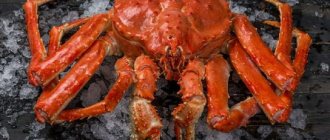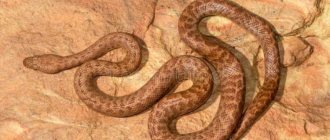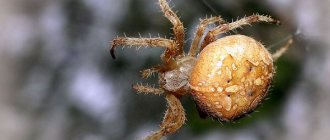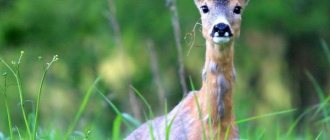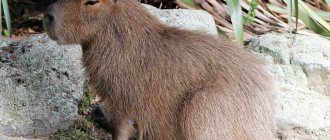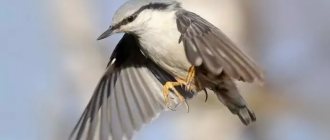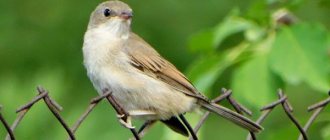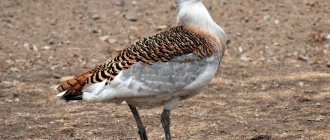The goby, like many other representatives of small fish, is a collective name for a whole galaxy of small aquatic predators. According to the biological classification, they are included in the ranks of gobies, which joined the order of perciformes.
Such a fish has a number of distinctive external advantages, among which the elongated body, which is compressed closer to the tail, is especially notable. Also, marine and any other species have a fairly impressive head and close-set eyes.
In addition to the upper fins, which are distinguished by their outstanding size in relation to the body, they received fused ventral fins. As a result of an unusual evolution, the fish acquired a suction cup, with which it can attach to almost any object located on the bottom. Thanks to this natural design, the river inhabitant tolerates fast currents well and also survives storms without consequences.
Description
goby
The round goby belongs to the Bychkov family, which is represented by more than 20 species in the coastal zone of the Azov and Black Seas, in estuaries, river mouths and the rivers themselves. Length up to 25 cm, weight up to 250 grams. The body is stocky, the tail is flattened towards the end, completely covered with scales, which also extend to the back of the head. It has a ridged head typical for gobies, a brownish-gray body with variations in tones, on the sides of which there are several dark brown elongated spots. It differs from other gobies by the presence of a black oval spot on the first dorsal fin.
The system of canals and pores of the lateral line is well developed, especially on the head. The mouth is of moderate length, its corners do not extend beyond the eyes. The coloring is varied, from light gray with subtle spots on the sides, to brown with a clear pattern or black (the latter is especially common during the spawning period, the males guarding the eggs remain black), however, there is a characteristic species-specific feature of this goby - a clear black spot, sometimes surrounded yellowish border on the back of the first dorsal fin. The head is usually darker than the body, the fins are gray.
Application not only in cooking
The popularity of gobies is so great that over time people even began to have aquarium relatives of predators. They are not considered noteworthy specimens in private collections, but many buyers who simply like to have animals in the aquarium are often content with just such residents. They are loved for their unpretentiousness in food and living conditions. But still, gobies are most often mentioned in the context of how to clean them to make a simple but satisfying lunch.
In coastal areas, residents not only know how to cook such seafood correctly, but also have a whole carload of all sorts of tricks and secrets to improve the taste characteristics.
Historians note that during wartime there would have been much more civilian casualties if villagers along the coast had not had constant access to marine goby supplies.
Those fish lovers who live far beyond the coastal zone are usually forced to be content only with the riches brought from the seabed. Another favorite alternative for bachelors, students and busy mothers is the famous canned food. They offer to try the legendary tomato-based gobies, which have gone from being eaten by tourists to being regulars in the refrigerators of busy people.
If the buyer is lucky enough to find a frozen version, the seller will offer whole fish that are not gutted and still have their heads intact. Such a catch can not only be put into soup, but also make a delicious gravy.
There is a separate category of eaters who are crazy about cutlets based on them. But for those who are preparing this dish for the first time, experts recommend first looking for packs of frozen round timber. Only this type does not have many small seeds that spoil the whole taste.
Cookbooks can also offer recipes that involve frying in hot oil. And here the main secret is thorough washing of the main ingredient without subsequent cleaning of the scales. It is this that will provide the finished product with a pleasant crispy crust.
A large percentage of the consumption of bulls falls on their preparation in a dried form. But here you should be very careful about observing all sanitary standards at the preparatory stage of the procedure. You should be even more vigilant if the eater intends to buy already dried fish string from hand. Such a purchase often turns into Russian roulette, since it is unclear under what conditions the drying was carried out.
A ready-to-eat product must not have any foreign unpleasantness or bitter aftertaste. All carcasses must be intact without any broken spots and not have “rusty” stains on the surface.
Kinds
- The sandpiper
got its name from its habitat. It prefers a bottom with sand and shell rock, and its body color matches the sandy bottom - yellowish tones combined with gray. The goby grows to a maximum of twenty centimeters. In addition to the Black and Azov Seas, where it is found in large numbers, it lives in estuaries and rivers flowing into the seas. - Round timber (kutsak)
settles among rocks and stones. It reaches a length of twenty-five centimeters, has a stocky body and a flattened tail. The color can range from light gray to brown with darker spots. A characteristic feature of this species is a black spot in the area of the first fin on the back. Round timber is able to adapt to varying degrees of salinity, therefore it lives in both sea and river water. Among the gobies caught, this species makes up the majority. - Knut (martovik)
also lives on rocky bottoms. Compared to round timber, it has larger dimensions: up to thirty-five centimeters in length and weight up to half a kilogram. The large head is distinguished by a large mouth. The body color is brownish with black spots. It differs from other species in having wide gills splayed in different directions. The martinfish feeds on small fish, including smaller relatives. The habitat is the Black Sea, Azov and Caspian waters. - Zelenchak, which came from the Mediterranean Sea, chose to live in the estuaries of the Black Sea. Also found in the western part of the sea, Dnieper reservoirs, selects a bottom overgrown with grass. The bull grows to a small size - no more than ten centimeters.
- The tsutsik goby
prefers to settle in thickets of sea grass, populating places with less salty water. Having the smallest size among the gobies of the Black Sea-Azov range (5-7 cm), it feeds on invertebrate inhabitants. A special feature of this species are two processes on the front of the head, reminiscent of a mustache. The body is sand-colored with a marble pattern and differs little from the colors of other bulls.
Nutrition
Gobies are carnivorous inhabitants of seas and rivers. They receive the main share of their food allowance by examining the sea or river bottom. In bottom waters they are saturated with zooplankton. The diet includes the larvae of any fish and insects, crustaceans such as amphipods, and gastropods.
Despite the apparent slowness, the fish of the goby family successfully attacks smaller relatives. In addition, it eats eggs and fry of other fish. But the appetite of gobies does not lead to a decrease in the populations of fish adjacent to them.
Habitats
It lives on shell-sandy and silty soils, preferring shell and rocky soils. Found in thickets of vegetation. Migrations: Spawning and feeding grounds are located close to each other. Makes seasonal migrations: in winter it migrates to deep sea areas, and in spring and summer it feeds at a depth of 0.5-10 m.
Found in the basins of the Black, Azov and Caspian seas. Lives in both salt and fresh water. It rises high up the rivers, even penetrating the Moscow River and the Baltic Sea basin.
Goby lifestyle
Gobies live alone, and try to stick to specific areas. Gobies do not make seasonal migrations. For the most part, they swim near the bottom because food sources are located there.
But pelagic gobies are a rare exception. There are species that do not leave the soil throughout their lives, for example, tape gobies dig holes in the silt in which they live and feed on small animals. Toothed gobies with a worm-like body live in deep burrows. The depth of the burrows of these fish can reach up to 90 centimeters.
Freshwater gobies can live not only in fresh water bodies, but sea gobies die without salt water.
Most gobies are carnivores: they feed on worms, mollusks, crustaceans, and shrimp. Large bulls often attack smaller brothers, even other bulls. The rotana firebrand is a voracious predator, as it can attack larger fish. In this regard, the rotana firebrand is considered a pest of fisheries. An exception among carnivorous gobies are Stephodon gobies, whose diet consists of microscopic algae.
Reproduction
When the water warms up to ten to twelve degrees in the spring, the gobies begin their spawning period, which continues throughout the summer. The male takes care of the gobies' eggs. First he prepares a hole under a stone. Then he “invites” females into his home, who lay eggs, attaching them to a stone inside the burrow. The number of eggs in one female ranges from two to three thousand. The more females visit the groom, the more eggs will be under his care. The male clings to the stone with his suction cup and begins to use his fins to create a flow of water in the hole so that the eggs are washed by running water and do not die. This way he protects his offspring until the eggs hatch into fry.
Spawning period
The spawning season of the sea goby occurs in the spring and summer. Males dig special holes where the female spawns.
Also, eggs can stick to vegetation on the bottom or stones. The protection of the new generation, driving away other predators, is carried out by males.
Fishing methods
The round goby is a commercial species and, perhaps, the main object of recreational fishing in the Sea of Azov. In Ukraine, it is caught using semi-mechanized and hand dredges, as well as bottom traps (so-called grabs). Recreational fishing is carried out mainly from the end of March to October, both from the shore and from boats, with cast and float rods; a variety of bait: shrimp, shellfish meat (mussels, rapana, grape snail) and raw meat (beef). The round goby bites especially well on bait made from chicken “navels” and beef heart. They use a local fishing method (under a boat, near a pier, etc.) or they fish “drawn” (throwing the tackle 15-30 m, slowly reeling it in; the bull chases the bait and bites). Often they use a tackle with a sliding sinker and two or three hooks, one of which touches the ground. Bait: shrimp, a piece of sea worm or fish, including goby, a piece of squid, meat, liver, snails and other animal baits. Line 0.25-0.4 mm (for casts, 0.6 (main) and 0.3 leashes are better), hook No. 6-10. Hooks with a long shank are preferable - they are easier to remove from the mouth, since the goby bite is greedy.
Male round gobies change color during the spawning period, becoming completely black, only the edges of the fins are light (they are called “blackies” or “gypsies”). They build nests on the bottom, clean and guard them, lure females into them with strange sounds (growling, croaking, squealing), and after spawning they drive them away and guard the eggs for two weeks, while not eating anything. The male goby desperately defends the nest: he selflessly throws himself on his finger, although he is as long as a finger; chases away fish twice its size; rushing at the intruder, growls, bites, and even spits stones. So, in the Great Lakes, the round timber has greatly displaced the local sculpin goby, Cottus bairdi, which is similar in size and shape and lives in the same places. The round timber expels the sculpin from nesting sites, eats its young and successfully competes for food. So it's harmful.
But the round timber destroys in large numbers the small striped shell of the zebra mussel (Dreissena polymorpha), which about 20 years ago got into the Great Lakes with ballast water, most likely also from the ports of the Black or Azov Sea. It was first discovered almost in the same place as the round timber - in Lake St. Clair. Then it populated all the Great Lakes, penetrated Missouri and Mississippi, and settled in vast territories of the United States and Southern Canada. Dreissena perfectly cleans water, but, multiplying in great numbers, it clogs water intake structures and water pipelines, drowns buoys and buoys, harms aquaculture and destroys local toothless shells.
The damage from it is multi-billion dollar. And none of the sea animals in America eat it! And the round goby eats 4-5 zebra mussels per hour, since its teeth are perfectly adapted to tear mollusks from the bottom and break their shells. After all, small bivalves are its main food in its Black Sea homeland; besides them, it eats worms and crustaceans, and sometimes fish. So, very useful! But large zebra mussels are too tough for a small bull, and they are the most prolific.
In the homeland of the goby - the Black and Azov Seas - it is eaten by various predatory fish - pike perch, stellate sturgeon, sturgeon, large flounder, as well as water snakes and herons. One would think that the predators of the Great Lakes - common bass, smallmouth black bass and walleye - would immediately rush to eat the bullhead. Not so! The goby turned out to be so evasive that the predators, accustomed to the leisurely local fish, at first could not cope with it, but then they got used to it, and local fishermen began to catch perches and pike perch with a belly full of gobies.
Calorie content
Due to its low calorie content, this fish can be a good dietary food. 100 grams contain 18 g of protein and 2 g of fat, and most importantly - only 88 kcal.
Of course, depending on the cooking process, the figures may be higher. For fried dishes, the figure will increase, but as a dietary food, fish meat can be boiled or made into fish soup.
Benefits and harms
In addition to its distinctive taste and consumer properties, goby fish stands out for its vitamin and mineral composition. The benefit of goby fish lies in the content of vitamin PP in the chemical composition of the product, and in addition natural compounds necessary for normal human life such as sulfur, zinc, molybdenum, fluorine and others.
It is worth noting that dried and salted bulls are especially popular. However, the characteristic taste properties of goby fish make it possible to produce a sufficient number of culinary products from the product. For example, goby makes excellent and nutritious fish cakes. In addition to its culinary benefits, goby fish play an important role in cleaning their habitats.
Usually goby fish are salted and dried, and only fresh fish meat is suitable for drying. If the catch has been lying around for at least a couple of hours, you won’t get a first-class product from the bulls. The bulls can be fried or boiled. However, due to the high content of bones, when presented or boiled, goby fish is much less popular than the dried product. The small but remote goby fish can become a tasty and healthy food product for people of all ages.
Goby is not recommended for consumption by those who suffer from allergies. It should also be given very carefully to children and consumed by pregnant women. The goby cleans the pond, stones and other fish. This is due to the special structure of this fish. But if the reservoir was oversaturated with harmful substances, they may remain in the goby. Therefore, the bull should be washed thoroughly before eating. It cannot be consumed raw - only after processing.
Yellow clown goby or Okinawan goby
These gobies live in reefs in Indonesia and the Philippines. They are small in size - the body length does not exceed 2.5-3.5 centimeters. The coloring of these fish is bright canary.
Clown bulls are peaceful creatures. They have a timid disposition. They get along well with other fish, but they constantly fight with representatives of their own species for cover. Therefore, they must live in spacious aquariums, and each individual must have enough places to hide.
If you find an error, please select a piece of text and press Ctrl+Enter.
Classification[ | ]
The family Gobiidae underwent a major reclassification in 2022 (Nelson et al., 2016). Previously, the Gobiidae family included six subfamilies: Gobiinae, Benthophilinae, Amblyopinae, Gobionellinae, Oxudercinae and Sicydiinae. In 2022, it retained the first two subfamilies and moved the remaining four into a separate family, Oxudercidae. In addition, genera previously included in the families Kraemeriidae, Microdesmidae, Ptereleotridae and Schindleriidae were added to the revised Gobiidae, although no subfamilies were described.
There are 186 genera:
- Aboma
- Acanthogobius
- Acentrogobius
- Afurcagobius
- Akihito
- Akko
- Amblychaeturichthys
- Amblyeleotris
- Amblygobius
- Amblyotrypauchen
- Amoya
- Anatirostrum
- Ancistrogobius
- Antilligobius
- Aphia
- Apocryptes
- Apocryptodon
- Arcygobius
- Arenigobius
- Aruma
- Asterropteryx
- Astrabe
- Aulopareia
- Austrolethops
- Awaouichthys
- Awous
- Babka
- Barbulifer
- Barbuligobius
- Bathygobius
- Benthophiloides
- Benthophilus
- Boleophthalmus
- Bollmannia
- Brachyamblyopus
- Brachygobius
- Bryaninops
- Buenia
- Cabillus
- Caecogobius
- Caffrogobius
- Calamiana
- Callogobius
- Caragobius
- Caspiosoma
- Chaenogobius
- Chaeturichthys
- Chlamydogobius
- Chriolepis
- Chromogobius
- Clariger
- Clevelandia
- Corcyrogobius
- Coryogalops
- Coryphopterus
- Cotylopus
- Christatogobius
- Croilia
- Cryptocentroides
- Cryptocentrus
- Crystallogobius
- Ctenogobiops
- Ctenogobius
- Ctenotrypauchen
- Deltentosteus
- Didogobius
- Discordipinna
- Drombus
- Ebomegobius
- Echinogobius
- Economidichthys
- Egglestonichthys
- Ego
- Elacatinus
- Eleotrica
- Enypnias
- Eucyclogobius
- Eugnathobius
- Eutaeniichthys
- Evermannia
- Evermannichthys
- Eviota
- Evorthodus
- Exyrias
- Favonigobius
- Feia
- Fusigobius
- Gammogobius
- Gillichthys
- Ginsburgellus
- Gladiogobius
- Glossogobius
- Gnatholepis
- Gobiodon
- Gobioides
- Gobionellus
- Gobiopsis
- Gobiopterus
- Gobiosoma
- Gobius
- Gobiusculus
- Gobulus
- Gorogobius
- Grallenia
- Gymneleotris
- Gymnoamblyopus
- Gymnogobius
- Hazeus
- Hemigobius
- Hetereleotris
- Heterogobius
- Heteroplopomus
- Hyrcanogobius
- Ilypnus
- Istigobius
- Karsten
- Kelloggella
- Knipowitschia
- Koumansetta
- Larsonella
- Lebetus
- Lentipes
- Lepidogobius
- Lesueurigobius
- Lethops
- Leucopsarion
- Lobulogobius
- Lophiogobius
- Lophogobius
- Lotilia
- Lubricogobius
- Luciogobius
- Luposicya
- Lythrypnus
- Macrodontogobius
- Mahidolia
- Mangarinus
- Mauligobius
- Mesogobius
- Microgobius
- Millerigobius
- Minisicya
- Mistichthys
- Mugilogobius
- Myersina
- Nematogobius
- Neogobius
- Nes
- Nesogobius
- Obliquobius
- Odondebuenia
- Odontamblyopus
- Oligolepis
- Ophiogobius
- Oplopomops
- Oplopomus
- Opua
- Oxuderces
- Oxyurichthys
- Padogobius
- Paedogobius
- Palatogobius
- Palutrus
- Pandaka
- Papuligobius
- Parachaeturichthys
- Paragobiodon
- Parapocryptes
- Parasicydium
- Paratrimma
- Paratrypauchen
- Parawaous
- Pariah
- Parkraemeria
- Parrella
- Pascua
- Periophthalmodon
- Periophthalmus
- Phoxacromion
- Phyllogobius
- Platygobiopsis
- Pleurosicya
- Polyspondylogobius
- Pomatoschistus
- Ponticola
- Porogobius
- Priolepis
- Proterorhinus
- Psammogobius
- Pseudaphya
- Pseudapocryptes
- Pseudogobiopsis
- Pseudogobius
- Pseudorhinogobius
- Pseudotrypauchen
- Psilogobius
- Psilotris
- Pterogobius
- Pycnomma
- Quietula
- Redigobius
- Rhinogobiops
- Rhinogobius
- Risor
- Robinsichthys
- Sagamia
- Scartelaos
- Schismatogobius
- Sicydium
- Sicyopterus
- Sicyopus
- Signigobius
- Silhouettea
- Siphonogobius
- Smilosicyopus
- Speleogobius
- Stenogobius
- Stigmatogobius
- Stiphodon
- Stonogobiops
- Sueviota
- Sufflogobius
- Suruga
- Synechobobius
- Taenioides
- Tamanka
- Tasmanogobius
- Thorogobius
- Tigrigobius
- Tomiyamichthys
- Tridentiger
- Trimma
- Trimmatom
- Trypauchen
- Trypauchenichthys
- Trypauchenopsis
- Tryssogobius
- Tukugobius
- Typhlogobius
- Valenciennea
- Vanderhorstia
- Vanneaugobius
- Varicus
- Vomerogobius
- Wheelerigobius
- Wuhanlinigobius
- Yoga
- Yongeichthys
- Zappa
- Zebrus
- Zosterisessor
Tackle used
Preparation for fishing begins with choosing gear. You can use almost any gear to catch bullheads. These could be:
- float rod;
- spinning;
- donka;
- snack.
Let's consider the choice of each gear in more detail.
Float rod
Fishing rods up to 2 to 4 m long are used. In this case, you can use a thin fishing line: catching a bull is such that the likelihood of cutting your hand is minimal, and there is no need to make long casts. You can choose a hook No. 10-12, since smaller ones will cause difficulties with their extraction.
For sea fishing, it is advisable to choose a wave-resistant float.
Spinning
It is best to choose an ultralight spinning rod with a rod from 2 m (fishing from a boat) to 3 m (fishing from the shore or pier). As bait you can use a small vibrotail, twisters or silicone worms; small jig heads are used.
Typically, artificial bait is used as bait for the first goby. The first caught goby, cut into pieces, serves as further bait.
Silicone bait for catching goby.
The bait can be moved in small jerks or simply dragged along the bottom for several 15-30 cm with short pauses.
Donka
Bottom tackle will be good for catching gobies that prefer a rocky bottom. In this case, a fishing rod with hooks No. 9-No. 10 is used.
The equipment of the donkey is standard - a sinker is attached at the end of the tackle, followed by leashes with hooks located at a distance of 20 cm from each other.
You can increase the efficiency of catching a goby by installing several donks nearby.
Zakidushka
It is recommended to choose a casting for a bull with a powerful rod so that you can cast a heavy weight sinker. The main line is chosen to be at least 0.25 mm (preferably 0.4 mm), leads - 0.18-0.2 mm. The weight of the sinker is at least 50 g.


